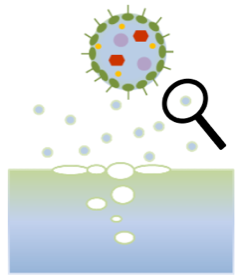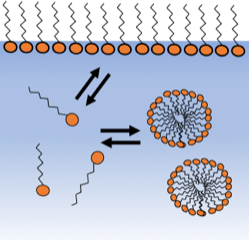It's Inauguration Week! Let the Fun Begin!
View details for Inauguration Day and access the full schedule of events.
View details for Inauguration Day and access the full schedule of events.

Freshwater lakes commonly experience algal blooms which leads to the growth of organics at the liquid-air interface. Upon wind action on an ocean or lake surface, aerosols are released to the atmosphere and are coated with a complex mixture of these organic surface-active molecules. These organic films affect various climate properties such as ice and cloud nucleation, multi-phase chemical reactions, and reflectivity. It is our goal to better understand the structure of these organic films in order to reduce the uncertainty surrounding the role of naturally produced aerosols in climate change. In this project, the molecular organization of soluble surfactants in saltwater solutions was examined using a variety of techniques to determine critical micelle concentrations.

A schematic of how organic-coated aerosols are formed via a bubble bursting event at a lake surface.

Equilibria between a monolayer, monomers of surfactant in solution, and micelles in solution.